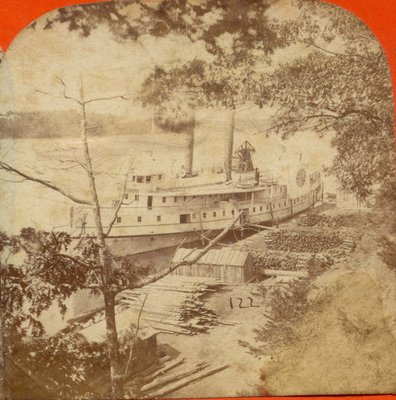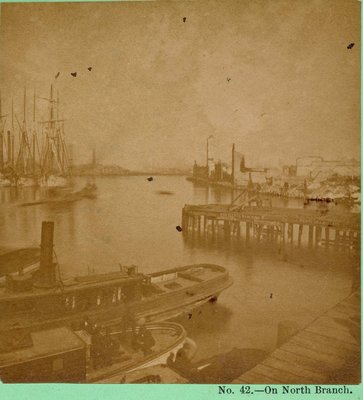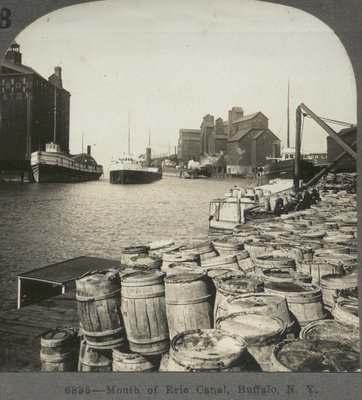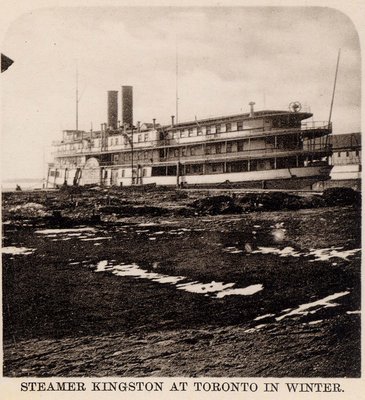Highlights from the collection
Stereoviews
Pages
Traditional photographsEngravingsStereoviewsChromolithographsPostcardsMaps and ChartsMagic Lantern SlidesPiano Sheet MusicBooksContributedDigital PhotographsOne of the oldest stereoviews in the collection, this image and a partner view, were made before the New York was taken down to the east coast to assist the Northern forces in troop and supply transportation during the American Civil War.
By 1860, such outdoor photography was increasingly possible as exposures became much faster. It must have been a still day as the leaves on the trees are reasonably well defined. Even so the Niagara river is a blur because the picture was still not fast enough.
So what do you do if the river just will not stay still long enough? Here's an attempt at a stereoview, not from a photograph, but from a pair of engravings. This gives us more dramatic action that the photographic technology of the day could have provided. Not to mention that from this angle a photographer would have been about to drown!
The iconic view of a Great Lakes steamboat in the rapids of the Saint Lawrence, and not a particularly good stereoview. The water has been retouched in this image to give it some flair. Over the next quarter century, this was reproduced a variety of times in a variety of ways, and retouched again and again as it purported to depict a series of vessels.
Since the nineteenth century, photographers have sought out evidence of human tragedy wherever they could find it. There are still hundreds of different stereographic images taken in the wake of the great Chicago fire. This is one of the few that shows the shipping on the Chicago River that escaped the blaze.
Over the years the Notman Studios produced a significant number of ship portraits. Here's one where the only surviving image of the ship is as a shipwreck. As a stereoview it is rather weak, but it is noteworthy how much better the ability to capture the waves had improved in a decade.
Early on stereoviews had settled into a standard dimension, roughly 7 inches wide by 3 1/2 inches high. This is an excellent example of a taller image, taken on the Cuyahoga River in Cleveland with the viaduct in the background. Why the four propellers are laid out on the wharf in front of the Saint Albans is unclear from this image.
One of the popular photographers in the Niagara Falls region was Charles Bierstadt. Thousands of his views of the Falls survive. This was slightly out of character for a Bierstadt image, a group of people on the deck of the old Civil War blockade runner, Chicora.
This view features a relatively new phenomenon, the "curved" mount. A slight curve in the stereoview card, it had been found, improved the ability to view the three-dimensional quality of the images.
One example, among dozens, of the Keystone View Company views from around the Great Lakes. In its stereoviews, Keystone focused on images with strong three-dimensional values: a foreground, middle ground and considerable depth beyond that. Most Keystone views had a "lesson" printed on the back, evidence of a particular fascination with the educational marketplace.
Where the Keystone images represented the high end of the marketplace after World War One, there were other views that were printed with lithographic technologies. Some were coloured; this view of the Kingston was in black and white. The "grainy" quality of the pictures make them far less attractive. They were, however, cheap to print.










